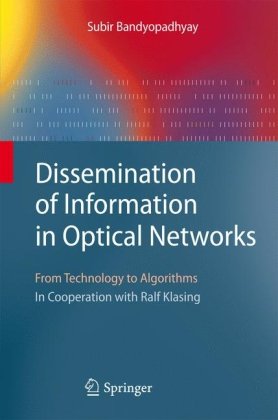

Most ebook files are in PDF format, so you can easily read them using various software such as Foxit Reader or directly on the Google Chrome browser.
Some ebook files are released by publishers in other formats such as .awz, .mobi, .epub, .fb2, etc. You may need to install specific software to read these formats on mobile/PC, such as Calibre.
Please read the tutorial at this link: https://ebookbell.com/faq
We offer FREE conversion to the popular formats you request; however, this may take some time. Therefore, right after payment, please email us, and we will try to provide the service as quickly as possible.
For some exceptional file formats or broken links (if any), please refrain from opening any disputes. Instead, email us first, and we will try to assist within a maximum of 6 hours.
EbookBell Team

4.7
16 reviewsOptical networks and the related technologies, network management software and services have undergone remarkable developments, and such networks are now the ultra-high-speed backbone networks for communication. Wavelength-Division Multiplexing (WDM), the ability to support multiple communication pathways over the same fiber, enables efficient use of the enormous capability for data communication of optical networks.
This book gives a broad overview of techniques used in the design of WDM networks for efficient dissemination of information in computer networks. It starts with an overview of the hardware components, then provides a thorough review of WDM, wavelength-routed networks, algorithms for route and wavelength assignment, design of broadcast and select networks, logical topology design, and techniques to handle faults and algorithms for efficient use of optical networks. Each topic has been covered rigorously with emphasis on detailed explanations of the approaches used, starting from the fundamentals up to the state of the art. The optimization techniques covered in the book include graph-theoretic algorithms, mixed-integer linear programming and heuristics.
The book is intended for beginners as well as for specialists, and the reader should be able to design WDM networks and follow developments in the field. Each chapter contains a detailed, annotated bibliography. There are numerous exercises for the reader to test understanding of the subject, while readers unfamiliar with mathematical programming techniques and network flow optimization are offered short, easy-to-understand appendices at the end of the book.